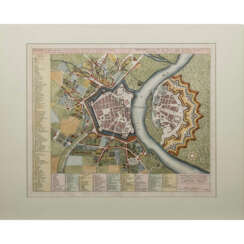furste


Francis Picabia, born Francis-Marie Martinez de Picabia, was a French avant-garde painter, poet, and typographist, whose work is celebrated for its diversity and innovation. His journey through various art movements, including Impressionism, Cubism, Dadaism, and Surrealism, showcases his refusal to be confined by any one style. Picabia's art is known for its eclectic nature, often blending mechanical elements with organic forms, thereby challenging traditional perceptions of art and beauty.
Picabia's significant contribution to the art world lies not just in his varied artistic output but also in his philosophical approach to creation. He believed in the freedom of expression, often using his art to critique societal norms and the art establishment itself. This rebellious spirit made him a pivotal figure in the Dada movement, where his works were celebrated for their irony and disdain for conventional art values.
Among his notable works, "Amorous Parade" and "I See Again in Memory My Dear Udnie" stand out, housed in prestigious institutions like the Museum of Modern Art in New York. These pieces exemplify Picabia's mastery over blending different elements of art movements, creating works that remain influential to this day. His legacy is not just in the pieces he created but also in his attitude towards art, encouraging future generations to challenge and redefine the boundaries of creativity.
For collectors and experts in art and antiques, Picabia's works represent not only significant artistic achievements but also valuable insights into the evolution of modern art. To stay informed about new product sales and auction events related to Francis Picabia, sign up for updates. This subscription is an essential resource for enthusiasts looking to enrich their collections with pieces from one of the most innovative artists of the 20th century.


Francis Picabia, born Francis-Marie Martinez de Picabia, was a French avant-garde painter, poet, and typographist, whose work is celebrated for its diversity and innovation. His journey through various art movements, including Impressionism, Cubism, Dadaism, and Surrealism, showcases his refusal to be confined by any one style. Picabia's art is known for its eclectic nature, often blending mechanical elements with organic forms, thereby challenging traditional perceptions of art and beauty.
Picabia's significant contribution to the art world lies not just in his varied artistic output but also in his philosophical approach to creation. He believed in the freedom of expression, often using his art to critique societal norms and the art establishment itself. This rebellious spirit made him a pivotal figure in the Dada movement, where his works were celebrated for their irony and disdain for conventional art values.
Among his notable works, "Amorous Parade" and "I See Again in Memory My Dear Udnie" stand out, housed in prestigious institutions like the Museum of Modern Art in New York. These pieces exemplify Picabia's mastery over blending different elements of art movements, creating works that remain influential to this day. His legacy is not just in the pieces he created but also in his attitude towards art, encouraging future generations to challenge and redefine the boundaries of creativity.
For collectors and experts in art and antiques, Picabia's works represent not only significant artistic achievements but also valuable insights into the evolution of modern art. To stay informed about new product sales and auction events related to Francis Picabia, sign up for updates. This subscription is an essential resource for enthusiasts looking to enrich their collections with pieces from one of the most innovative artists of the 20th century.


Frank William Brangwyn was a Welsh artist, painter, watercolourist, printmaker, illustrator, and designer.
As well as paintings and drawings, he produced designs for stained glass, furniture, ceramics, glass tableware, buildings and interiors, was a lithographer and woodcutter and was a book illustrator. It has been estimated that during his lifetime Brangwyn produced over 12,000 works. His mural commissions would cover over 22,000 sq ft of canvas, he painted over 1,000 oils, over 660 mixed media works (watercolours, gouache), over 500 etchings, about 400 wood-engravings and woodcuts, 280 lithographs, 40 architectural and interior designs, 230 designs for items of furniture and 20 stained glass panels and windows.





Henri Joseph Harpignies was a French landscape painter of the Barbizon school.


Friedensreich Regentag Dunkelbunt Hundertwasser was an Austrian visual artist and architect who also worked in the field of environmental protection.
Hundertwasser stood out as an opponent of "a straight line" and any standardization, expressing this concept in the field of building design. His best known work is the Hundertwasserhaus in Vienna, which has become a notable place of interest in the Austrian capital, characterised by imaginative vitality and uniqueness.



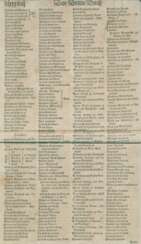

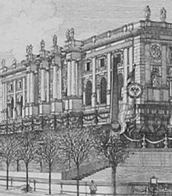



![[Boccaccio, Giovanni. Il Filocolo, deutsch:]](/assets/image/picture_4051308/9ef81/xhhsrcldqvf9mbkoxjbw4vp-pz6opxu2kkg2zw0vqjsa7utjpjewt5egkgws1zw1718713600jpg__fix_374_244.jpeg)
![[Boccaccio, Giovanni. Il Filocolo, deutsch:]](https://veryimportantlot.com/assets/image/picture_4051308/9ef81/xhhsrcldqvf9mbkoxjbw4vp-pz6opxu2kkg2zw0vqjsa7utjpjewt5egkgws1zw1718713600jpg__fix_374_244.jpeg)
![[TOYEN]](/assets/image/picture_2426910/ed9a7/cf9a3c217c97230f768e993f143c823fjpg__fix_374_244.jpeg)
![[TOYEN]](https://veryimportantlot.com/assets/image/picture_2426910/ed9a7/cf9a3c217c97230f768e993f143c823fjpg__fix_374_244.jpeg)



































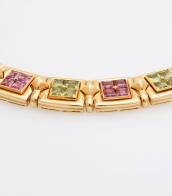
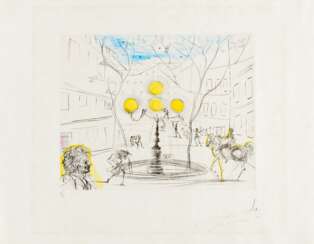





![GERNING, Baron Johann Isaak von (1767-1837) - A Picturesque Tour along the Rhine from Mentz to Cologne. London: R. Ackermann, 1820 [tavole con filigrane datate 1816-17; testo con filigrane del 1817].](/assets/image/picture_1242393/bd840/56qyuikfcdo6mstwh43vbtnvwjfb07v3qout2ezeyjmy0ce6bcg17vtnlf7lfgi1608651686jpg__fix_374_244.jpeg)
![GERNING, Baron Johann Isaak von (1767-1837) - A Picturesque Tour along the Rhine from Mentz to Cologne. London: R. Ackermann, 1820 [tavole con filigrane datate 1816-17; testo con filigrane del 1817].](https://veryimportantlot.com/assets/image/picture_1242393/bd840/56qyuikfcdo6mstwh43vbtnvwjfb07v3qout2ezeyjmy0ce6bcg17vtnlf7lfgi1608651686jpg__fix_374_244.jpeg)






